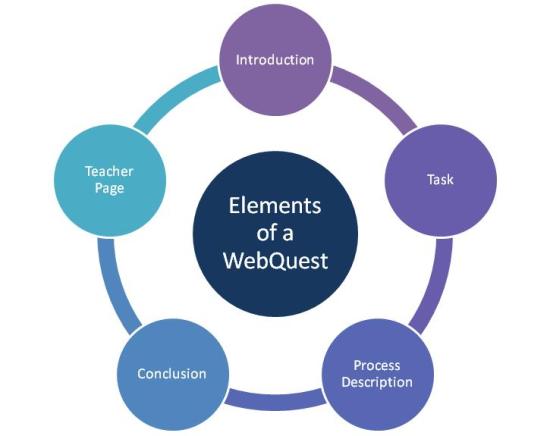Teaching Film with New Media
February 20, 2010 at 1:23 pm | Posted in Helpful Internet Services, Lesson Plan, Lesson Preparation, Praxis, Technical Skills | Leave a commentTags: school use, technical basics, useful URLs
“Every time I go to a movie, it’s magic, no matter what the movie’s about.” (Steven Spielberg)

Films are part of our everyday life and culture. We associate events, emotions and memories with them. They show us unknown countries and magical places. Movies make us cry and laugh, sometimes both and they challenge our imagination again and again.
With the help of New Media it is now possible to show and work with films on a new level in the classroom. DVDs and the Internet make new teaching strategies possible.

DVD-Video
The DVD (Digital Versatile Disc) is a visual data memory. It enables the consumer to watch films in different languages. Additionally it makes it possible to add different subtitles to the movie. Single sequences can be shown and analyzed. it is possible to rewind, freeze-frame or show the certain parts in slow-motion. Another advantage of the DVD-Video compared to older mass storage devices (e.g. VHS) is the fact that it almost always contains bonus features. Depending on the kind of film these are documentaries, making- ofs, interviews with actors and creators of the film. Some DVDs feature an audio commentary of the director.
By the help of DVD-Video it is now easier for teachers to structure their lesson and film viewing. If they only want to show sequences of the movie it is easily done. Additionally they can decide whether or not they will include subtitles and if they do what language they will be in.

I used the film “Atonement” on DVD in one of my English lessons. The class had read the novel by Ian McEwan beforehand. I chose only some sequences to give my students an impression and asked them to compare them with the novel they had read. I also included a task where they had to transform a dialogue of the book into a movie scene. After that we watched the film-version and compared both.
The new medium DVD-Video makes it so much easier and faster to navigate through the film and find suitable scenes. Due to the limited time available in a classroom most teacher’s tend to show only a selection of scenes, which is now easily practicable with the DVD.
Internet

Another new medium one can use for teaching movies is the Internet. No other platform enables teachers to get that much information and teaching material on new and upcoming films.
A useful site is the Internet Movie Database. Here you can find all kinds of information from cast, filming locations and movie quotes to pictures and reviews. One can find pictures of the movie and characters also on the film’s own homepage and on google pictures.
If you want to show a trailer of the film you can either check its homepage or go to YouTube.
A movie trailer is always a good way to introduce the topic. A nice alternative to a “normal” viewing: try to show it to your students either without or only with sound and let them discuss their impressions and expectations.


A useful site for teaching material is Film Education. It contains a database of films suitable for school. Each film is classified with an appropriate age level and they provide study guides.

Another possibility to teach movies is to include the original script. I chose one scene from the movie, gave the script to the students and they had to act out the scene. It was extremely fun. Afterwards we watched the corresponding movie scene and compared the different representation styles. If you are looking for scripts on the Internet, the Internet Movie Script Database or Simply Scripts are recommendable. Most of the scripts are available for free.
Working with the Internet also enables students to do their own research and e.g. create reports or Powerpoint presentations.

During my internships at school I had the chance to work with movies and New Media. It is unnecessary to stress the motivation and fun students had while working on these projects. The variety of possibilities you have to choose from makes it possible to try out and create new teaching techniques. I thinks films and New Media make teaching and learning colourful, amusing and creative but also informative.
“Movies can and do have a tremendous influence in shaping young lives in the realm of entertainment towards the ideals and objectives of normal adulthood.” (Walt Disney)
WebQuests
January 20, 2010 at 12:34 pm | Posted in Helpful Internet Services, Internet Learning, Lesson Preparation, Technical Skills | Leave a commentTags: e-learning, internet, Lesson Plan, school use, useful URLs
What is a WebQuest?

A WebQuest defines a research project that encourages the students to
exploit certain websites and facilitates their self-learning strategies.
There is a nice introductory article on Lehrer-Online.com in which one can familiarize with the topic.
The WebQuest on WebQuests gives a nice introduction into the topic.
Elements of a WebQuest
A usual WebQuest consists out of 6 parts or elements.
(see diagram)
Introduction
The Introduction is used to raise the student’s attention and motivation for the upcoming task. Usually it introduces the central question or problem.
Task
The students have to solve a task, the central assignment of the WebQuest. It can be created according to topic and learners’ needs. It could include e.g. designing, deciding, creating, analysing and predicting.
Process Description
Here the steps are shown, which the students have to follow to complete their task. Additionally one can mention possible tools for the working process.
Evaluation
This includes a table with assessment criteria.
Conclusion
The Conclusion should include a summary of what the students have learned during the WebQuest.
Teacher Page
The Teacher Page ensures the availability of the WebQuest to other teachers with remarks and useful suggestions.
Example WebQuests
One can find a number of WebQuests on the WebQuest Database. I liked the WebQuest on The World of Shakespeare.
I liked this one because of its aesthetic layout, colour choice and its clarity. The formulation of the task is clear and understandable.
Furthermore I liked the exercises and creative work the teacher included into the Quest (e.g. students have to act-out a scene).
Create your own WebQuest
One can use two programs to generate ones own WebQuest.
The first one is called Aula 21. No registration required, you just enter your text and pictures and the program creates an html code. The program is free and one can quickly create a WebQuest like “The World of Shakespeare”.
text and pictures and the program creates an html code. The program is free and one can quickly create a WebQuest like “The World of Shakespeare”.
 WebQuest Wizard is another program that requires registration and that is more complex. It provides a web space and offers more designing opportunities than the Aula 21.
WebQuest Wizard is another program that requires registration and that is more complex. It provides a web space and offers more designing opportunities than the Aula 21.
8 Steps on how to create a WebQuest
The following steps give an overview of what steps are involved when you are creating your own webquest:
Advantages and disadvantages
I always like the idea that student’s experience as much exploratory-learning as possible. With WebQuests they learn to research and work on a schedule. The teacher only functions as a moderator. The students can work independently and are encouraged to creative processes. Additionally this form of learning is new to the students and more motivating than other methods.
On the other hand, creating such a project is very time-consuming. An enormous amount of preparation time is needed to collect and create the needed material. One has to master the complexity of such a project without loosing track of the learning aims and the topic.
Nevertheless I think this is a useful tool and I would include it in my class, but one has to keep in mind that only a well-structured and elaborated WebQuest is useful (especially on tasks, process and evaluation) and a GOOD one.
Web 2.0 Applications
November 25, 2009 at 8:04 am | Posted in Helpful Internet Services, Internet Learning, Lesson Plan, Lesson Preparation | Leave a commentTags: e-learning, internet, Lesson Plan, school use, useful URLs
During our last in-class session we talked about Web 2.0 applications and their use in school. One Blog gives an overview over some of them.
I picked applications, that I thought would be useful in class.
Collaboration
Meebo is a chat- platform that provides the possibility of instant messaging between icq, AOL, Yahoo!, Google and MSN.
Etherpad enables the users to chat in real-time, so collaborative work is possible. I liked this application because it is easy accessable and operable.
Bookmarking and Note-Taking
See delicious post.
Research
One should introduce google scholar and answers.com as alternatives to usual google research.
Study Tools
SparkNotes provides information about various academic subjects including literature and history.
Mind Mapping
Bubble.us and gliffy enable students to create mind-maps or flowcharts without registering.
Various Tools
Applications like google maps, google earth and the interactive periodic table of elements should be familiar to the students.
My group created a Lesson Plan with the applications bubble.us (mind-mapping tool) and answers.com (search engine). Additionally the students had to create a Powerpoint-Presentation.
Internet Learning Sites
November 19, 2009 at 2:22 pm | Posted in Helpful Internet Services, Internet Learning, Lesson Preparation | Leave a commentTags: e-learning, internet, internet-games, school use, useful URLs
During our last session we analysed certain internet learning sites. The analysis can be found in the Blog of our group.
I personally liked the site “Game Zone” because of its well-structuredness and variation. The site contains mostly grammar and vocabulary games for all learner levels.
I would recommend to use this site in school to additionally practice certain phenomena.
Digital Schoolbag
November 2, 2009 at 10:07 am | Posted in Software | Leave a commentTags: internet, school use, Software, useful URLs
The “digital schoolbag” is a collection of software that is free and downloadable for school-use. One can download it via www.digitale-schultasche.de and store it on an 1 GB USB stick.

Digital Schoolbag
The package contains Skype, Open Office, several learning software, a VLC- Media Player, a CD-burner, nearly 40 programs.
The advantages are that one can play the programs via the USB-Stick, without installing them. Additionally the download is free, students can use the same software they use in school and the school computers do not need that much memory space any more.
I think that this is a great and easy way to integrate New Media into the classroom. It enables the students to use and get to know the media actively and encourages the teachers to use new teaching methods with the help of the software.
ESL PodCards
October 22, 2009 at 1:39 pm | Posted in Lesson Plan, Lesson Preparation | Leave a commentTags: internet, Lesson Plan, pictures, school use, useful URLs
The site www.eslpodcards.com provides listening exercises with worksheets to certain topics (mostly “Landeskunde”). The sound samples are sorted by country and topic.
Lesson plan
I created a lesson plan (grade 9, 45 min) with the podcard “Brighton” .
I chose this topic because I recently been to Brighton.
I would start my lesson by showing the pupils a picture of the Royal Pavillion in Brighton. I would ask them to guess where the building is situated (continent, country, city).

- Brighton Royal Pavillion
Because of its Indo-Saracenic style most pupils will probably relate it in India.
After this introduction I would use the listening exercise of the podcard. The site provides several activities. I would use the questions in activity 2.
Additionally one can use the other exercises that are provided from the site. One can download them via a pdf-file.
The next step would be Internet Research. The class is divided into two groups and each group researches one question.
Q1: What is the Brighton Pride Parade?
Q2: Why is the city called “Brighton and Hove”
If there is some time left, I would spend it, showing soms photographs I took during my vacation in Brighton.
Advantages and disadvantages
ESL PodCards provide an interesting alternative to ordinary teaching ideas. One can plan a lesson with very little work and time.
Nevertheless there are several things to consider when working with the website. One has to make sure to check whether the task is suitable for the group of learners and their language level. Additionally it is advisable to evaluate the provided material carefully. Some of the tasks might not be suitable or even unnecessary.
All in all the site can function as the “something different” one sometimes needs in class.
Create a free website or blog at WordPress.com.
Entries and comments feeds.









